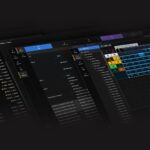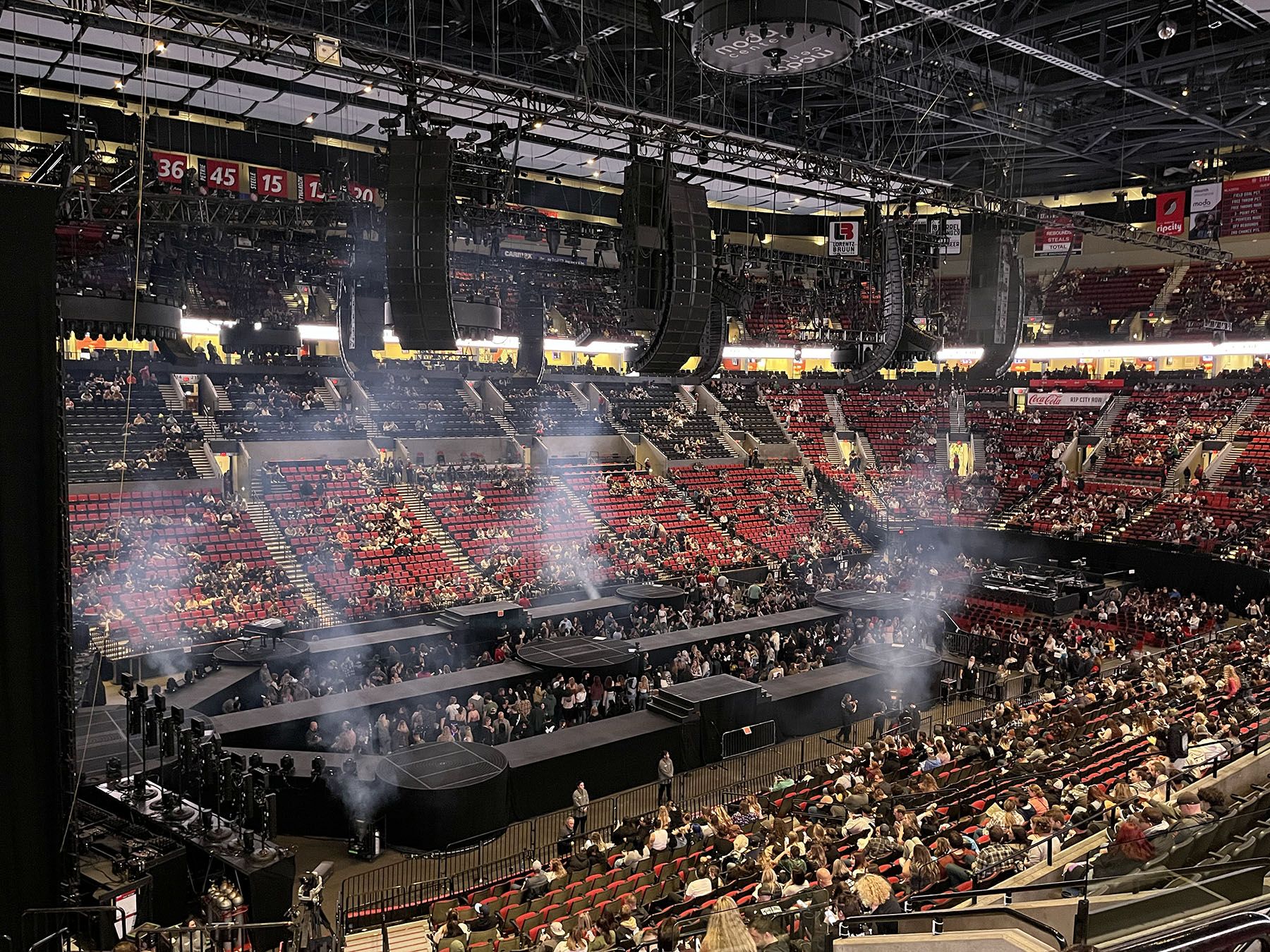To support his fourth and newest studio album, Twelve Carat Toothache, Post Malone opted not to stay “Cooped Up” by hitting the road this fall for a 38-date North American arena tour with special guest Roddy Ricch.
With PRG recently rejoining the singer/rapper as his touring sound reinforcement provider, one thing that remained unchanged on the Twelve Carat Tour was his reliance on L-Acoustics K Series loudspeakers, which had also been deployed on his 2019/20 Runaway Tour.
Manning the FOH mix each night was Burton Ishmael, known for his previous work with Lil Baby, Nas, Big Sean, Miguel, H.E.R, and others.
Supporting him at FOH was systems engineer Ben Bruns, who toured with both Jack Johnson and Harry Styles between the Twelve Carat and Runaway Tours.
According to Bruns, the sound system approach for Malone’s latest tour was somewhat unconventional, which was a direct answer to the unique layout of the stage.
“The stage featured three parallel thrusts—I called it ‘the trident’—which really made the show about Post,” he describes. “He had access to the entire arena floor, which fans absolutely loved.
“This design required re-thinking the classic approach of two large hangs of PA flanking a normal stage, but with a distributed system approach of eight hangs of L-Acoustics K2 arrays, I could be more precise with my Soundvision predictions, which allowed a more consistent SPL around the entire arena.”
With three arrays per side lining the left and right thrusts and two more arrays firing out at the end, much like a typical left/right mains setup, the PA was comprised of eight identical hangs of 16 K2 enclosures.
Eight more KS28 complemented four cardioid-configured hangs of eight KS28 subs on the arena floor.
Additionally, four hangs of six Kara were horizontally flown as audience pit-fills, bringing the grand total of L-Acoustics loudspeakers up to 192, which were powered by 96 LA12X amplified controllers and driven by two P1 Milan AVB FOH processors.
“With the help of my good friend Dave Brooks at L-Acoustics, along with Posty Touring’s Production Manager Dennis Danneels and PRG’s Burton Tenenbein, the PA design that we came up with very effectively kept the energy at least 15 dB down on the runways minimizing bleed into Post’s microphone,” says Ishmael.
“I also high-passed his mic at 125 Hz to address the low end, but there really wasn’t anything to worry about beyond that, and the system’s coverage of the audience was dead-on as Soundvision predicted.”
Ishmael shares that low end is always a huge component of his mix equation. “For me, it sets the foundation for the balance of the mids and highs,” he says.
“Post’s music contains quite a variety of different low-end ‘flavors’ and is tremendously dynamic, so subs have to keep up with the punch needed. Thankfully, KS28 goes low, moves fast, and can take a serious beating.
“Those who know me and the way I mix will tell you that I have two volume levels: soft and full-power loud. I push the system, mixing not only for the sonic details but for feeling and to get an audience involved.
“I want to give them the experience of life-like sound. To accomplish this, I need power, dynamic woofers, and zero musical distortion. L-Acoustics delivers all of that.”
From a system tuning perspective, Bruns notes that Soundvision’s Autosolver tools, especially Autofilter, were great for helping him “get the rig quickly to where it needed to be sonically each night,” he says.
“Burton has a very discerning ear, so hitting his target curve without a bunch of filters was crucial, and the FIR filters really let me dial in and make every seat the best seat in the house.
“Also, Autoclimate’s temperature and humidity compensation was a lifesaver for keeping the show under control. We time and tune the rig when it’s a cold, empty arena, so with 20,000 people screaming and a ton of pyro, those conditions change quickly.
“P1 allowed these adjustments to be made reliably and consistently on the fly, and the processor made it very easy to route for ADA feeds, records, walk-in music, and so on.
“With P1, we drove the system Milan AVB and had perfect and consistent network reliability—the rig never once went into fallback.”






